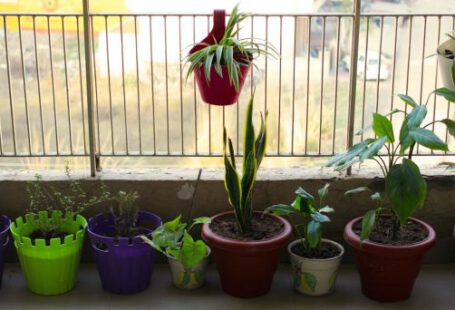Are you interested in starting your own organic vegetable garden? Growing your own vegetables not only provides you with a fresh and healthy food source, but it also allows you to connect with nature and reduce your carbon footprint. Starting an organic vegetable garden may seem overwhelming at first, but with the right knowledge and preparation, you can create a thriving garden that will reward you with a bountiful harvest. In this article, we will guide you through the steps to get started on your organic vegetable gardening journey.
Choosing the Right Location
The first step in starting an organic vegetable garden is to choose the right location. Look for an area in your yard that receives at least six hours of direct sunlight each day. Ensure that the location has good drainage, as vegetables dislike standing water. Consider the proximity to a water source, as you will need to water your plants regularly. Additionally, make sure that the location is easily accessible for maintenance and harvesting.
Preparing the Soil
Before planting your organic vegetable garden, it is crucial to prepare the soil. Start by removing any weeds or grass from the area. Then, loosen the soil using a garden fork or tiller. Incorporate organic matter such as compost or well-rotted manure to improve the soil’s structure and fertility. Avoid using chemical fertilizers or pesticides, as they can harm beneficial organisms and the environment.
Choosing the Right Vegetables
When selecting vegetables for your organic garden, consider your climate and the time of year. Some vegetables thrive in cooler temperatures, while others prefer warmer weather. Choose varieties that are well-suited to your region to ensure a successful harvest. Additionally, consider the space available in your garden and the specific needs of each vegetable. Some plants require more space to grow, while others can be planted closer together.
Planting and Watering
Once you have prepared the soil and chosen your vegetables, it’s time to plant them in your organic garden. Follow the planting instructions for each vegetable, ensuring that you provide enough space between plants. Water your newly planted vegetables thoroughly to help them establish their root systems. After the initial watering, be sure to water your garden regularly, especially during dry periods. Aim to water at the base of the plants, avoiding wetting the foliage, as this can lead to disease.
Organic Pest Control
One of the challenges of organic gardening is managing pests without the use of chemical pesticides. Fortunately, there are several organic pest control methods you can employ. Encourage beneficial insects, such as ladybugs and lacewings, by planting flowers that attract them. Use physical barriers like netting or row covers to protect your plants from pests. Additionally, practice crop rotation and companion planting to deter pests naturally.
Harvesting and Enjoying Your Organic Bounty
As your organic vegetable garden grows and matures, you will be rewarded with a bountiful harvest. Harvest your vegetables when they are ripe and ready to be enjoyed. Different vegetables have different harvesting methods, so be sure to research the specific requirements for each vegetable in your garden. Once harvested, wash your vegetables thoroughly and savor the delicious flavors of your organic bounty.
In conclusion, starting an organic vegetable garden is a rewarding and fulfilling experience. By choosing the right location, preparing the soil, selecting the right vegetables, and employing organic pest control methods, you can create a thriving garden that will provide you with fresh and healthy produce. Remember to water regularly and harvest your vegetables at their peak. Get started on your organic vegetable gardening journey and enjoy the benefits of growing your own food.





